Intel Core i7-11700K Review: Blasting Off with Rocket Lake
by Dr. Ian Cutress on March 5, 2021 4:30 PM EST- Posted in
- CPUs
- Intel
- 14nm
- Xe-LP
- Rocket Lake
- Cypress Cove
- i7-11700K
Gaming Tests: Red Dead Redemption 2
It’s great to have another Rockstar benchmark in the mix, and the launch of Red Dead Redemption 2 (RDR2) on the PC gives us a chance to do that. Building on the success of the original RDR, the second incarnation came to Steam in December 2019 having been released on consoles first. The PC version takes the open-world cowboy genre into the start of the modern age, with a wide array of impressive graphics and features that are eerily close to reality.
For RDR2, Rockstar kept the same benchmark philosophy as with Grand Theft Auto V, with the benchmark consisting of several cut scenes with different weather and lighting effects, with a final scene focusing on an on-rails environment, only this time with mugging a shop leading to a shootout on horseback before riding over a bridge into the great unknown. Luckily most of the command line options from GTA V are present here, and the game also supports resolution scaling. We have the following tests:
- 384p Minimum, 1440p Minimum, 8K Minimum, 1080p Max
For that 8K setting, I originally thought I had the settings file at 4K and 1.0x scaling, but it was actually set at 2.0x giving that 8K. For the sake of it, I decided to keep the 8K settings.
For our results, we run through each resolution and setting configuration for a minimum of 10 minutes, before averaging and parsing the frame time data.
| AnandTech | Low Resolution Low Quality |
Medium Resolution Low Quality |
High Resolution Low Quality |
Medium Resolution Max Quality |
| Average FPS | 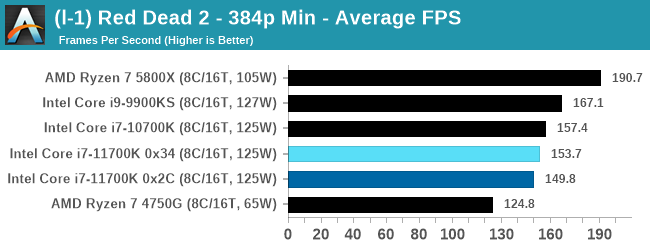 |
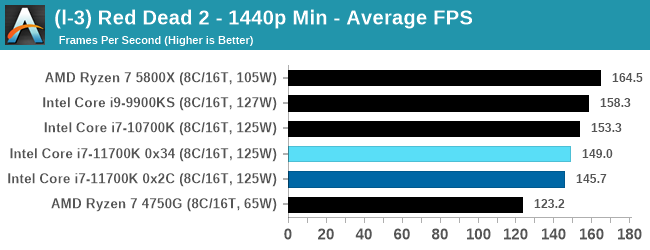 |
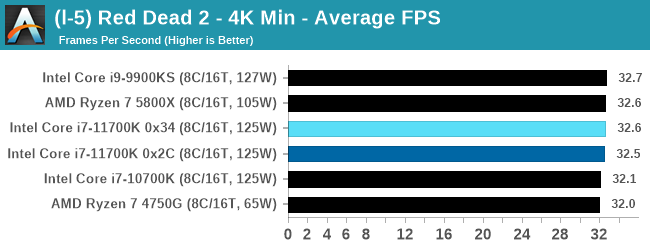 |
 |
| 95th Percentile | 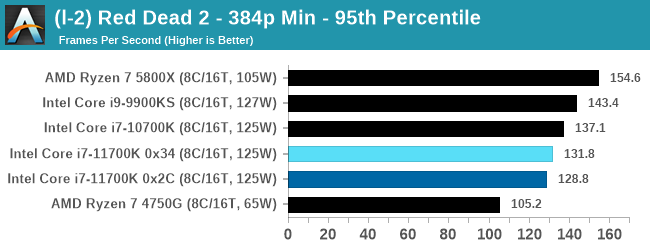 |
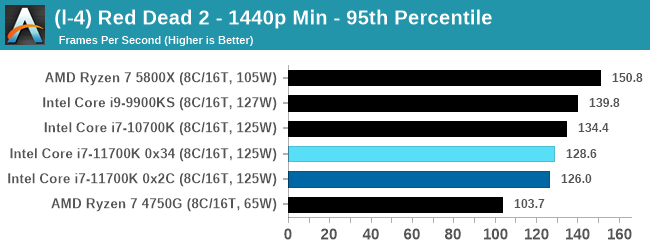 |
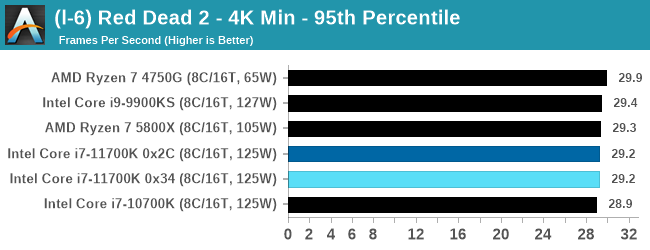 |
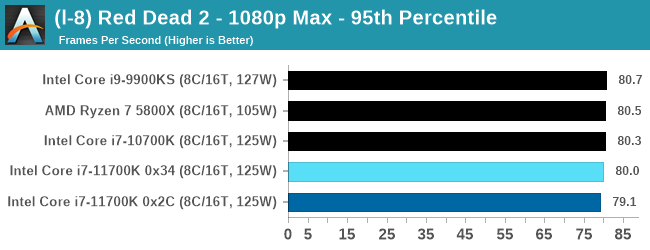 |
All of our benchmark results can also be found in our benchmark engine, Bench.












541 Comments
View All Comments
TheinsanegamerN - Monday, March 8, 2021 - link
They're the same chip, the only difference is clock speeds. Dont get your hopes up, RKL is a total dud, much like Williamette was.Samus - Saturday, March 6, 2021 - link
blppt - my concern is that AMD may have a superior IPC, but the real fruit comes from the manufacturing process. Intel is still (somewhat) competitive at 14nm and that in itself is quite unbelievable. Imagine where this chip would be on 7nm or 10nm, at 6GHz+ and more cores with 2-3x the cache.That said, this victory may be short lived because AMD is basically taking advantage of the embarrassing execution Intel has repeated, much like they did 20 years ago with the P4 (albeit that was an architecture failure, not a manufacturing process failure)
Thesubtlesnake - Saturday, March 6, 2021 - link
Intel's latest 10nm process delivers *slower* clocks than its 14nm one. So, no, 6 GHz is not on the table. I imagine that when the transition to 7nm, Intel will be able to achieve moderately faster clock speeds than with 14nm.Otritus - Sunday, March 14, 2021 - link
10nm SF is good enough for 5 GHz. 10nm ESF can clock higher, so Intel's latest (but unreleased) process should match 14nm. I would not expect 7nm to clock higher than 14nm because it is becoming very clear that 5Ghz+ is just a waste of power and transistors, so i would not expect 7nm architectures to be designed to clock higher. We either are getting lots of IPC or just over 5GHz.Slash3 - Friday, March 5, 2021 - link
Mad lad.edved - Friday, March 5, 2021 - link
Nice write-up. Thank you.lucasdclopes - Friday, March 5, 2021 - link
Power efficiency is abysmal on this one.CiccioB - Friday, March 5, 2021 - link
No, it is not. It lower than AMD's efficiency, but it not that bad for being based on such an old process.PixyMisa - Friday, March 5, 2021 - link
So it's abysmal, but that's only to be expected?Spunjji - Saturday, March 6, 2021 - link
Not bad for an old process is still abysmal by the standards of 2021. No wonder Apple dropped them like a hot rock.